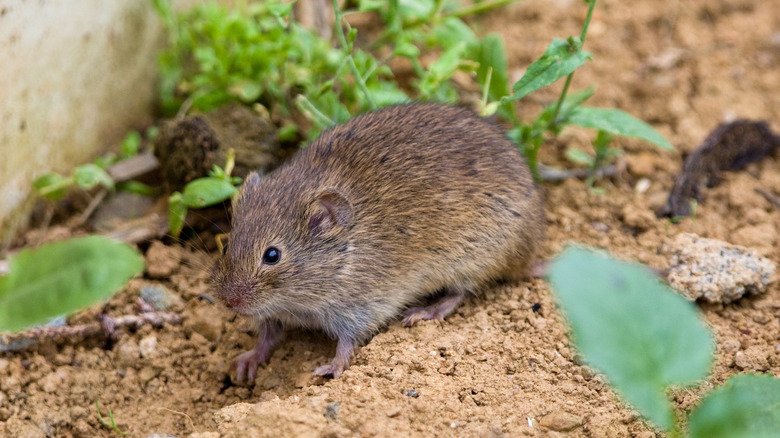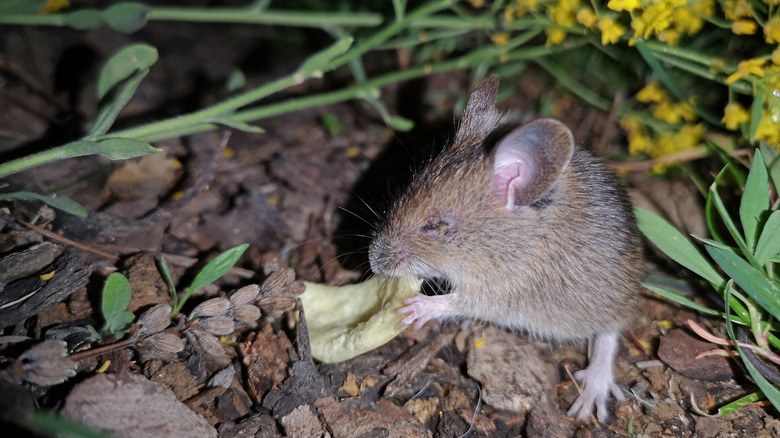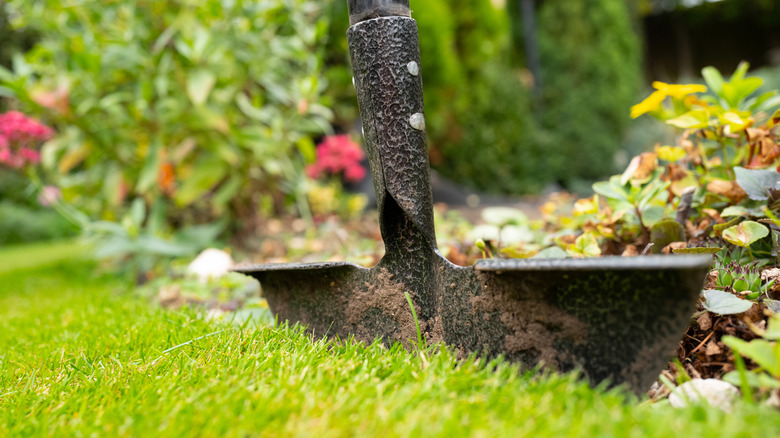The Sneaky Mistake That's Attracting Voles To Your Yard And Garden
If you're an avid gardener, then you've probably encountered a vole or two. Prairie voles (Microtus ochrogaster) and meadow voles (Microtus pennsylvanicus) are two of the most common varieties in North America. (Don't confuse them with moles, though; voles are entirely different creatures.) These small, dirt-dwelling rodents are considered garden pests you'll want to banish from your yard because they love to tunnel just below the surface of the soil. They also enjoy gnawing on tree bark and plants' root systems. Left unchecked, an infestation of voles can lead to unsightly holes in the ground and damage to small shrubs, trees, or other plants on your property, even in the dead of winter.
Wondering why you're seeing so many voles in the first place? The culprit could be a sneaky mistake — namely, the fact that your yard or garden is poorly maintained. There is nothing voles love more than an excess of mulch they can burrow into or tall, unkempt grass they can hide behind. If there is too much mulch or debris scattered throughout the ground on your property or you're not mowing your lawn frequently, then you may have inadvertently created the perfect environment for these tunneling critters.
Why messy, unkempt yards and garden beds appeal to voles
"Voles are active day and night, year-round," wildlife specialist Robert Pierce, PhD, said in an article for Southern Living magazine. "Any landscape with a lot of cover, such as mulch, landscape fabric, or low-growing shrubs, provides good habitat for voles." These small rodents are omnivores, which is a fancy way of saying they eat everything. However, they're primarily herbivores and favor plant stems, roots, and grass, which is why you'll usually notice scattered vole holes — a telltale sign of a vole problem — on the surface of your yard or garden. These holes typically form criss-crossing trails and are easiest to spot in late winter or early spring, when the ground is more exposed.
Voles are drawn to overgrown yards because it gives them plenty of grass to munch on and some protection from predators like hawks, foxes, or badgers, who can't spot them as readily behind the cover of tall vegetation. Similarly, they adore an excess of mulch, fallen leaves, or untrimmed shrubbery because it provides a covering for them to duck under or dig into as needed.
How to prevent voles from overtaking your yard or garden
Wondering how to prevent voles from overtaking your garden? Thankfully, the answer is fairly straightforward: Stay on top of your lawn maintenance! Though it's impossible to entirely deter voles, you can definitely take steps to make your property unappealing to them. That includes not using too much mulch on your lawn, trimming your grass regularly so voles are more exposed to predators, and keeping any dense shrubs or ground covers spread out and neatly manicured. You'll also want to do a thorough job of removing any woodpiles, dead leaves, or other debris off the ground — these can easily become hiding spots for voles.
Bird feeders are another common thing that can attract voles to your yard. These critters will happily munch on bird seed. If you have any bird feeders on your property, remove them, or make sure they're hung somewhere high up where voles can't reach them. Cleaning up the ground below your bird feeders can also make them less appealing to voles. Additionally, you can protect younger trees from voles by installing exclusion barriers around their bases.
Also worth noting: Voles have very short lifespans, and their populations naturally fluctuate, peaking every two to five years. Not only that, but the type of damage they inflict is rarely permanent. Even if voles wreak havoc on your yard, you can reseed the grass, take steps to get any overgrown parts of your yard under control, and expect to see those hole-filled trails get covered up with new growth in no time.


